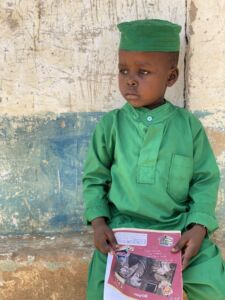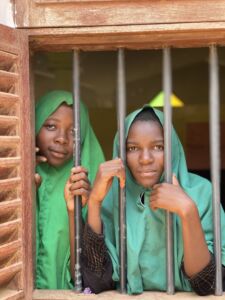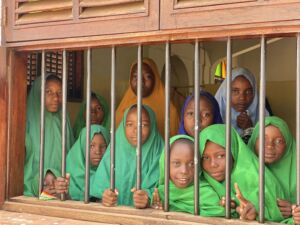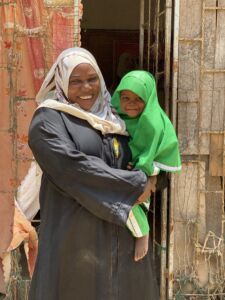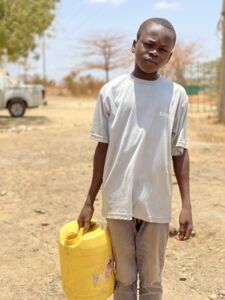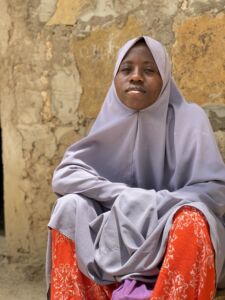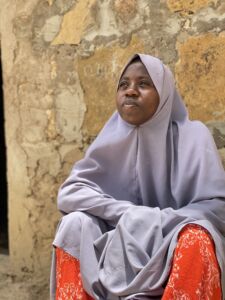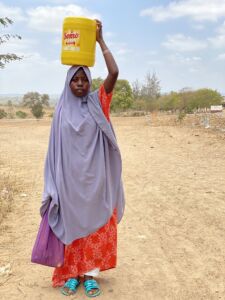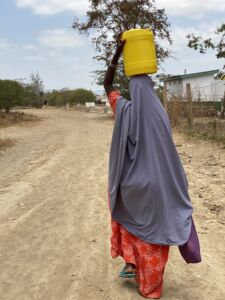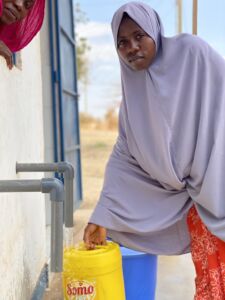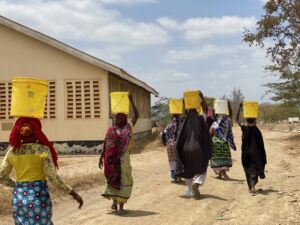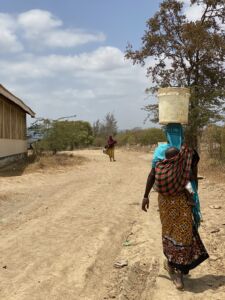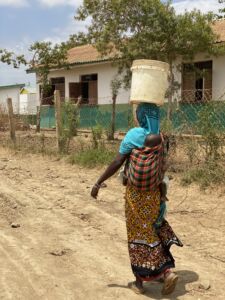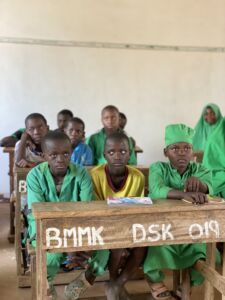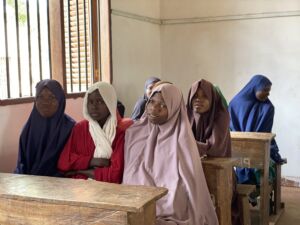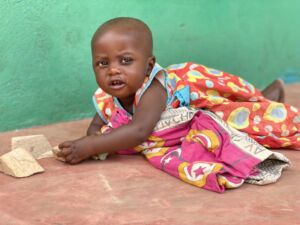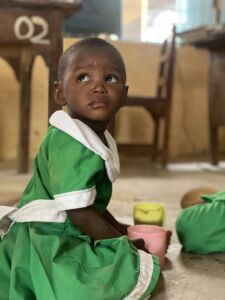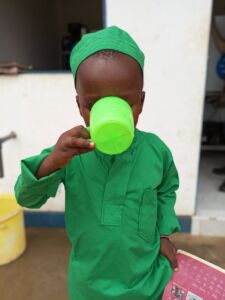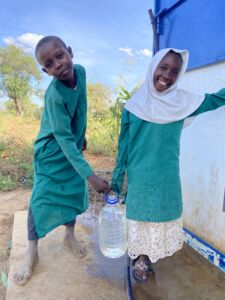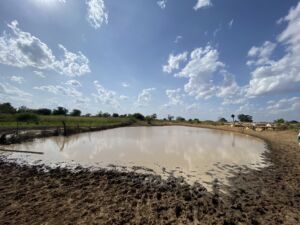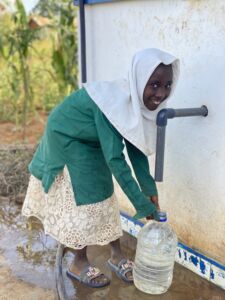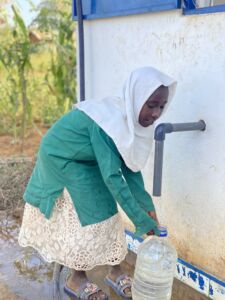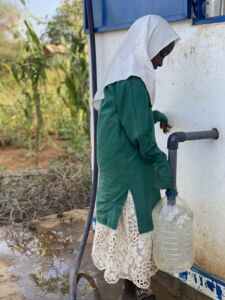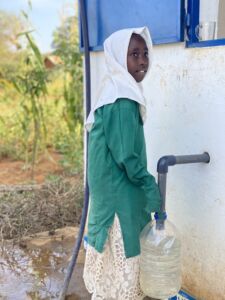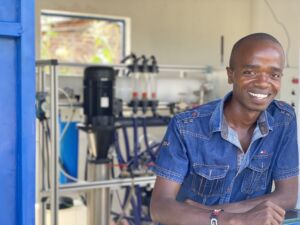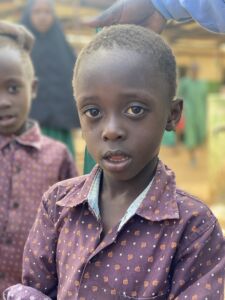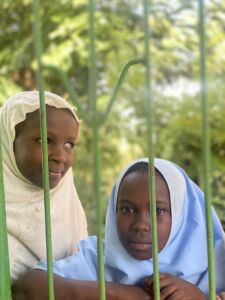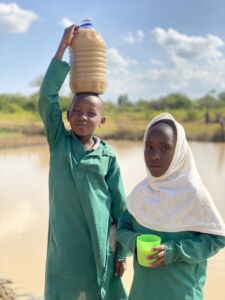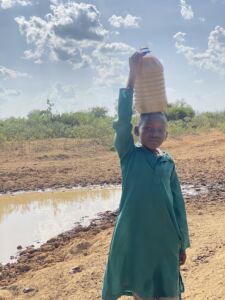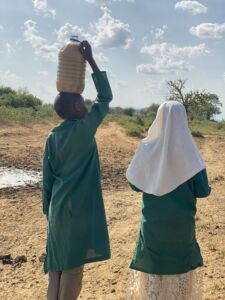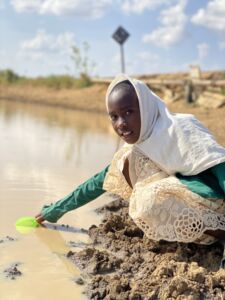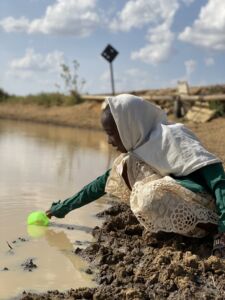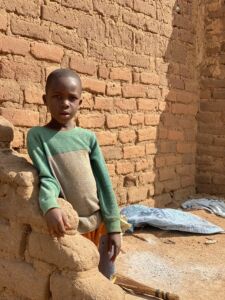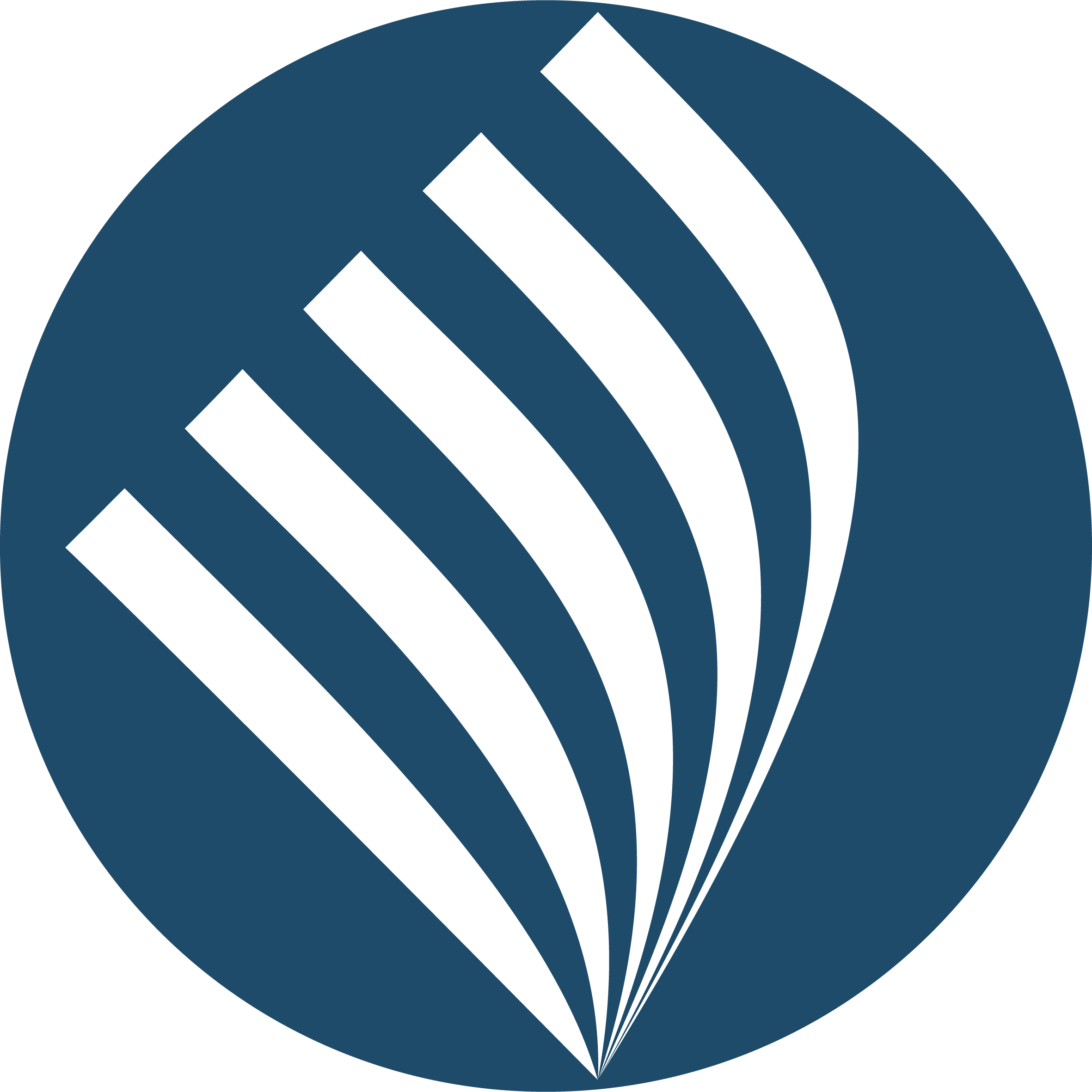
Lady Fatima Water Initiative
People all around the world are experiencing varying levels of water accessibility. For some, the water that flows from their sinks is clear and constant. For approximately 30% of the global population, more than 785 million people, basic water services lie out of reach. This means that often, individuals must travel long and unsafe distances to secure clean water suitable for drinking, cooking, sanitation and hygiene, and agriculture.
About the Water Initiative
Most water is collected from one of two types of sources. The first is underground, this includes infiltration wells, springs, and wells. Underground water sources are plentiful but difficult and expensive to reach and filter, making them particularly unsustainable. The second type is surface water, including rivers, lakes, streams, and reservoirs. Surface water sourcing is a much more accessible method on account of the close proximity of these bodies of water to where people live and work, and their tendency to be easily filtered. Without filtration and purification, the water derived from these sources can be unhygienic and unsafe for consumption. Upwards of 2 billion people around the world lack access to safe drinking water and basic sanitation services. Contaminated water and poor sanitation can lead to the contraction and spread of water-borne pathogens and cause illnesses like diarrheal diseases, cholera, amebiasis, and typhoid fever. Access to clean water is therefore vitally important to public health and safety.
When the demand for water cannot be easily met, families are forced to invest more time, energy, and resources into the continual task of securing this survival need. Women and children in particular are predominantly affected by the weight of this responsibility. The process of water collection may take hours and require someone to travel long distances, keeping them away from the classroom and their studies. Worldwide, women spend a collective 40 billion hours collecting water per year. Many girls are forced to drop out of school in order to fulfill their familial duty. This widens the already gaping global gender disparity in education.
- 1 out of every 5 girls is not enrolled in primary school, compared to 1 out of every 6 boys. Girls bare the brunt of water gathering responsibilities, and cannot be present for their education as a result. Additionally, a school’s lack of water and sanitation facilities may keep many young women from attending once they reach puberty. The simple construction of toilets and latrines in schools can encourage the continued education of young women.
- 780 million people lack access to improved water services. Improved water sources include piped household water connection, public standpipe, borehole, protected dug well, protected spring, and rainwater collection. Even so, the water that comes from these sources is not always safe. In fact, more than 884 million people do not have safe drinking water.
- At least 1/3 of the world’s population do not have access to improved sanitation or drinking water. Improved sanitation services should limit human contact with excreta, and therefore act as a measure of disease prevention. Examples of such services include flush toilets/latrines to a piped sewer system, septic tank, or pit latrine.
- Over 90% of those lacking access to improved sanitation services resided in East Asia and the Pacific (22% – 520 million people), Sub-Saharian Africa (30% – 706 million people), and South Asia (40%), where nearly 1 billion people lacked access in 2015.
- 88% of deaths from diarrheal diseases are a result of unsafe drinking water and poor sanitation and hygiene. Millions of people worldwide suffer from water-borne infections like typhoid fever, cholera, giardia, dysentery, E. coli, and Hepatitis A.
- Constructing safe, affordable, and resilient water infrastructure around the world can enhance virtually every facet of human life, from health and well-being to education and livelihood.
For more than a decade, The Mainstay Foundation has been a proud partner of trusted organizations in expanding access to safe water for vulnerable communities across Africa and Asia. With the help of these local partners, water infrastructure projects have been expertly guided and realized from start to finish. The Foundation has identified the vulnerable region of East Africa as a backdrop for our recent and upcoming charity work to support and develop Shi’a Ithna ‘Ashari communities.
Together, we have the power to safeguard the future of at-risk communities worldwide by providing them with water security. You can support our mission by championing our cause on social media, within your networks, and via donation. Every contribution will directly support the construction and maintenance of solar-powered water services, desalination plants, and bore wells for villages in need, providing them with safe water for years to come.
- With a donation of $5,000, you can assist in the long-term delivery of solar-powered water services.
- With a donation of $2,000, you can help in the construction of a bore well.
Every contribution, regardless of scale, has the capacity to make a meaningful difference. We can ensure that families have a steady stream of clean water for drinking, cooking, and washing, and strengthen the health of whole communities so that they can live, learn, and work without having to worry about water.
- Groundwater is simply the subsurface water that fully saturates pores or cracks in soils and rocks. Aquifers are replenished by the seepage of precipitation that falls on the land, although they can be artificially replenished by people as well.
- Shallow groundwater is more likely to occur in larger quantities under valleys than under hills because groundwater obeys the law of gravity and flows downward just as surface water does.
- Rocks are the most valuable clues of all consolidated formations such as sandstone, limestone, or granite as well as for loose, unconsolidated sediments such as gravel or sand. An ‘aquifer’ is a body of rock that contains a usable supply of water.
- Gravel, sand, sandstone, and limestone are among the best aquifers, but they form only a fraction of the rocks in the Earth’s crust. Most rocks are fine-grained or otherwise “tight” and store or carry little water.
- First, the hydrologist prepares a geologic map showing where the different kinds of rock come to the land surface. Some rocks may be so cracked and broken that they provide good openings to carry water underground.
- Next, the hydrologist gathers information on the wells in the area: their locations, the depth to water, the amount of water pumped, and the kinds of rock they penetrate.
- If there are no wells in the area or not enough information is available on existing ones, the hydrologist may contract with a well driller to put down some test holes.
- Entire setup (includes solar power plant): $15,000 – $100,000
- Hydrological tests and reports: $800 – $1,000
- Drilling, construction and test reports for water: $75 – $100 per meter
- Solar water pumps including desalination plant if needed: range from $2,000 – $250,000
- Changing the filters: $500 – $2,000 every 3-4 months
- Pumps – over 8 years
- Solar panels – 25 years
- Batteries (if applicable) – 7 to 8 years
- Water Treatment plant – over 10 years
Those who benefit from this project are among the most impoverished and marginalized people in the remote regions of Africa and Asia. Extremely hardworking and ill-equipped, families survive on less than $2 a day. Many women and children are burdened by the responsibility of water collection, and many community members suffer from the adverse direct and indirect health impacts of water insecurity. This project can provide clean, sanitary water to entire communities in as little as 2 weeks. Depending on the water source and quality available, projects could take up to 4 months to complete. In general, the average project is estimated to take about 5-8 weeks. The cost of a single project can range from $2,000 – $100,000. Once functional, water plants have the capacity to serve a population of anywhere between a few hundred and a few thousand people for a duration of up to 20 years. During this time, rural communities and their neighboring villages benefit from the clean water supply, utilizing it for agricultural and fishing needs, and sparking impactful economic stimulation. An investment of $1 in support of a clean water initiative can generate $4 – $12 in economic returns for the communities served. You can support our cause by sharing our mission, contributing monetarily, or partnering with us on water initiatives. Your gift has the potential to enhance the health, livelihood, and education of thousands of people. This is an opportunity to reinforce the trust we place in one another as fellow human beings, and expand our vision of building a global charitable community.

